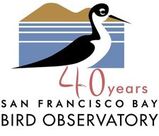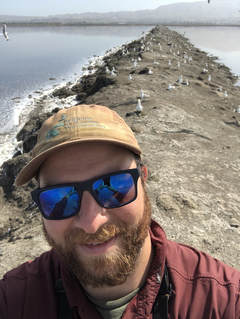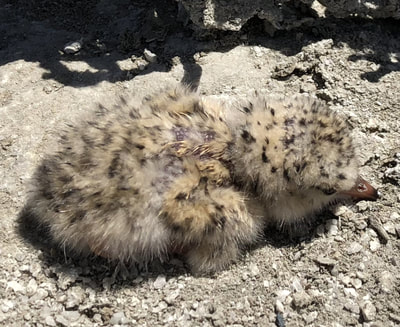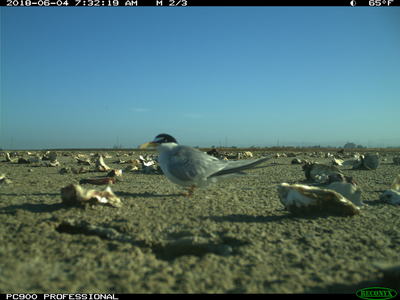|
By Plover Program Director Ben Pearl
colony. So when Least Terns began arriving at Eden Landing on April 23 this year, over a month earlier than they had in 2017, we were hopeful that it would be a productive breeding season for both terns and plovers. The season started out slowly, with Least Terns seen plunge-diving for fish in ponds and tidal sloughs. But soon, we began to see Least Tern courtship displays, which begin with the male conducting aerial displays and distinct calls. The male will then bring a fish to the waiting female, displaying his offering by walking circles around her. The courtship culminates with the two standing close together, at which point they will turn their heads back and forth in a synchronized alternating pattern before the fish is finally given to the female. After courtship, tern pairs will make a simple scrape in the ground and lay 1-2 eggs. By early June, we had found a large number of active least tern nests, and observed twice the number of terns nesting at Eden Landing compared to 2017. We again noticed that plovers appeared to choose nest locations near the colony, seemingly to take advantage of the colony defense. Unfortunately, plovers were not the only ones to take notice of the colony, as a large number of nests were eaten before the eggs could hatch. Based upon photo evidence from trail cameras placed at nearby plover nests, scat found near nests, and prints on the pond bottom, we believe that most of these nests were eaten by the invasive European red fox. Luckily, Least Terns often breed in two large waves, and though we continue to see a high predation rate, some nests hatched and the chicks are on their way to fledging! Future SFBBO efforts will focus on how to increase tern breeding success despite the presence of many predators.
Plover Program Director Ben Pearl leads research on Snowy Plovers and California Least Terns as well as habitat restoration and public education projects for these species. If you would like to help Ben with plover research, habitat restoration, or community outreach, please visit our website's volunteer section. You can also reach Ben at [email protected].
0 Comments
Your comment will be posted after it is approved.
Leave a Reply. |
WingbeatWingbeat is a blog where you can find the most recent stories about our science and outreach work. We'll also share guest posts from volunteers, donors, partners, and others in the avian science and conservation world. To be a guest writer, please contact [email protected]. Archives
July 2024
Categories
All
|
San Francisco Bay Bird Observatory ● 524 Valley Way, Milpitas, CA 95035 ● 408-946-6548 ● [email protected]




 RSS Feed
RSS Feed